#colonial philippines
Explore tagged Tumblr posts
Text

Native Filipino soldier under Spanish service, 1862.
First artwork of the year!
8 notes
·
View notes
Text


Mag-Ingat Ka. (Mahal Kita).
ourstaturestouchedtheskies (inspo).
"The Philippines has a complex history marked by colonization, war, and political instability. These events have left deep scars on the national psyche, contributing to collective trauma. [...] Stories of hardship, loss, and violence have been passed down, shaping perspectives and creating anxieties that linger through generations."
#my edit#there is a special kind of trauma found in Filipino children#a kind of generational trauma that is chained to them with a rosary#noah kahan#growing sideways#stick season#philippines#colonial philippines#filipino#edit#graphic design#photo edit#historical#historical fashion#photography#black and white photography#family portrait#generational trauma#vent art#lyrics#lyric art#vent
2 notes
·
View notes
Text





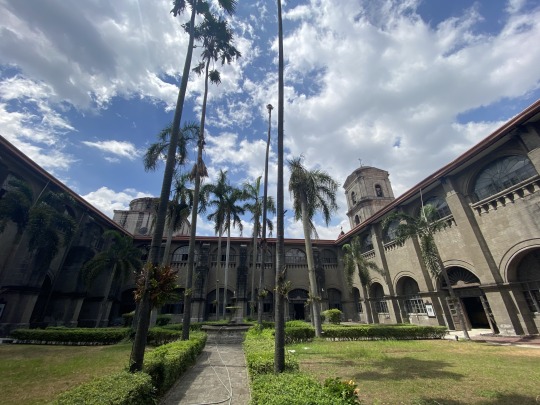

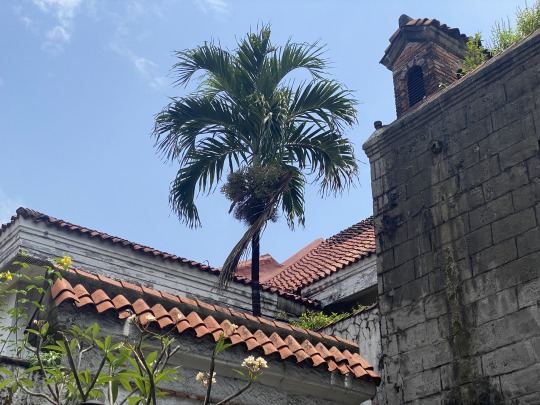



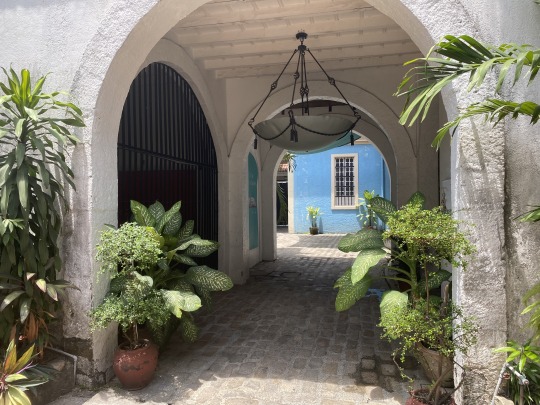
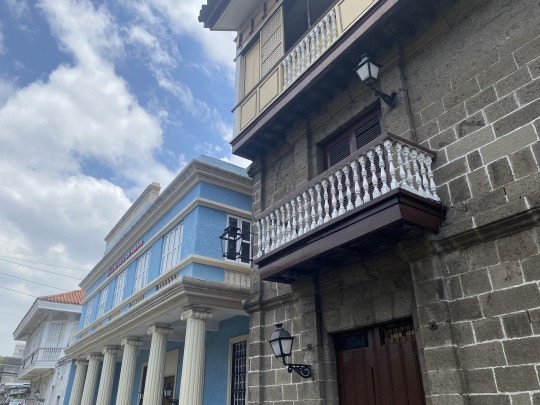

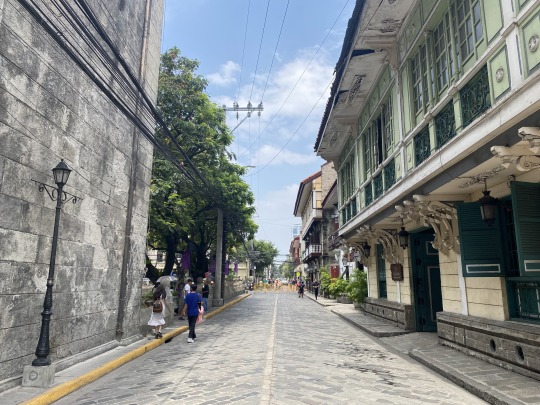
City Shots 6 (2024)
One of my long overdue personal trips was one I spent in the Old City. I've made plans to visit the place before but due to unexpected upheavals (with me moving last year and all), it took until Lent 2024 for me to actually do so. If you haven't been following me, I have a longstanding interest in historic Philippine architecture which had its roots nearly 10 years ago when I started building colonial-themed houses in the Sims 3.
My trip was, like the one in 2022 before it, made during Lent. Unlike in 2022, however, I traveled alone, which gave me plenty of opportunities to explore Plaza San Luis and its neighbors.
I only had time to explore the area around Plaza San Luis and three of its museums (only two of which I elected to share). Inasmuch as I would want to take pictures of the rest of the city's museums (including the ones situated at Fort Santiago) and the other structures around the district, I ran out of time and energy due to how mercilessly hot the day was.
Like with my previous post, more information is shown under the cut.
Camera: iPhone 11
Date: 26 March 2024
Location: Plaza San Luis Complex, Intramuros, Manila, Philippines
Usage: By request. Noncommercial only.
The Old City of Intramuros (meaning "Within the Walls") was the nucleus of modern Manila, built over the flattened remains of the fortress city-state encountered by the conquistador Miguel Lopez de Legaspi in 1570. The city was the crown jewel of the Spanish Philippines and was once the home of the city's elite. Today, the city's residents comprise mostly of students and informal settlers, with the majority of people being tourists and the people who work in the businesses supporting the tourism industry.
Many of the sites in the city are in various states of ruin and restoration, very few of which besides the walls being the original structures at all. Most of the buildings in the city (including the entirety of Plaza San Luis) consist of reconstructed replicas. The Casa Manila Museum (the large yellow structure) isn't even based on a structure from the Old City but is a rebuilt building from a different district altogether.
The only building from the era that survived to be restored is San Agustin Church, the oldest surviving colonial stone structure in the country. Much of the Old City was destroyed toward the end of World War II.
#photography#city shots#urban#cityscapes#architecture#buildings#trees#colonial philippines#urban photography#church#museum#Manila#Intramuros
8 notes
·
View notes
Text
The Spanish surnames of many Filipinos have often misled foreigners here and abroad, who are unaware of the decree on the adoption of surnames issued by Governor-General Narciso Clavería in 1849. Until quite recently in the United States, the Filipinos were classified in demographic statistics as a “Spanish-speaking minority,” along with Puerto Ricans, Cubans, Mexicans, and other nationals of the Central or South American republics. The Philippines, as is well known, was a Spanish colony when Spain was mistress of empires in the Western Hemisphere; but the Americans were “hispanized” demographically, culturally, and linguistically, in a way the Philippines never was. Yet the Spanish surnames of the Filipinos today—García, Gómez, Gutiérrez, Fernández—seem to confirm the impression of the American statistician, as well as of the American tourist, that the Philippines is just another Mexico in Asia. Nor is this misunderstanding confined to the United States; most Spaniards still tend to think of “las Islas Filipinas” as a country united to them through the language of Cervantes, and they catalogue Philippine studies under “Hispano-America.” The fact is that after nearly three-and-a-half centuries of Spanish rule probably not more than one Filipino in ten spoke Spanish, and today scarcely one in fifty does. Still the illusion lives on, thanks in large part to these surnames, which apparently reflect descent from ancient Peninsular forbears, but in reality often date back no farther than this decree of 1849.
Somehow overlooked, this decree, with the Catálogo Alfabético de Apellidos which accompanied it, accounts for another curiousity which often intrigues both Filipinos and foreign visitors alike, namely, that there are towns in which all the surnames of the people begin with the same letter. This is easily verifiable today in many parts of the country. For example, in the Bikol region, the entire alphabet is laid out like a garland over the provinces of Albay, Sorsogon, and Catanduanes which in 1849 belonged to the single jurisdiction of Albay. Beginning with A at the provincial capital, the letters B and C mark the towns along the coast beyond Tabaco to Tiwi. We return and trace along the coast of Sorsogon the letters E to L; then starting down the Iraya Valley at Daraga with M, we stop with S to Polangui and Libon, and finish the alphabet with a quick tour around the island of Catan-duanes. Today’s lists of municipal officials, memorials to local heroes, even business or telephone directories, also show that towns where family names begin with a single letter are not uncommon. In as, for example, the letter R is so prevalent that besides the Roas, Reburianos, Rebajantes, etc., some claim with tongue in cheek that the town also produced Romuáldez, Rizal, and Roosevelt!
Excerpt from the 1973 introduction to Catálogo de Alfabético de Apellidos by Domingo Abella
1K notes
·
View notes
Text


Pre-Colonial Filipino Mermaid!
One of the most requested historical mermaid designs was a Pre-colonial Filipino mermaid. Of course as a collection of islands there is a huge amount of variation to choose from, and I eventually decided on Visaya fashion with some classic-inspired tattoo designs.
I am the artist! Do not post without permission & credit! Thank you! Come visit me over on: instagram.com/ellenartistic or tiktok: @ellenartistic
#pre colonial philippines#philippines#historical mermay#historical mermaid#collection of mermaids#ellenart#digital illustration#historically inspired#I tried my best#historical fashion
1K notes
·
View notes
Text
I drew Monkey King but as a Filipino 😈 I'm more focused on the mythology than lmk on this design
I made a whole explanation about every detail about the design but idk if I should publicly share it?


I try to match his Chinese attire with the Philippines one like.. what makes him the Monkey King or Sun Wukong
#monkey king#sun wukong#filipino Sun Wukong#filipino Monkey King#Philippine attire#filipino#filipino outfit#Philippines pre-colonial#pre-colonial Filipino#the great sage equal to heaven
316 notes
·
View notes
Text


#this is also religious#manananggal#filipino#pre colonial philippines#original character#original art#lotus art#artists on tumblr
81 notes
·
View notes
Text
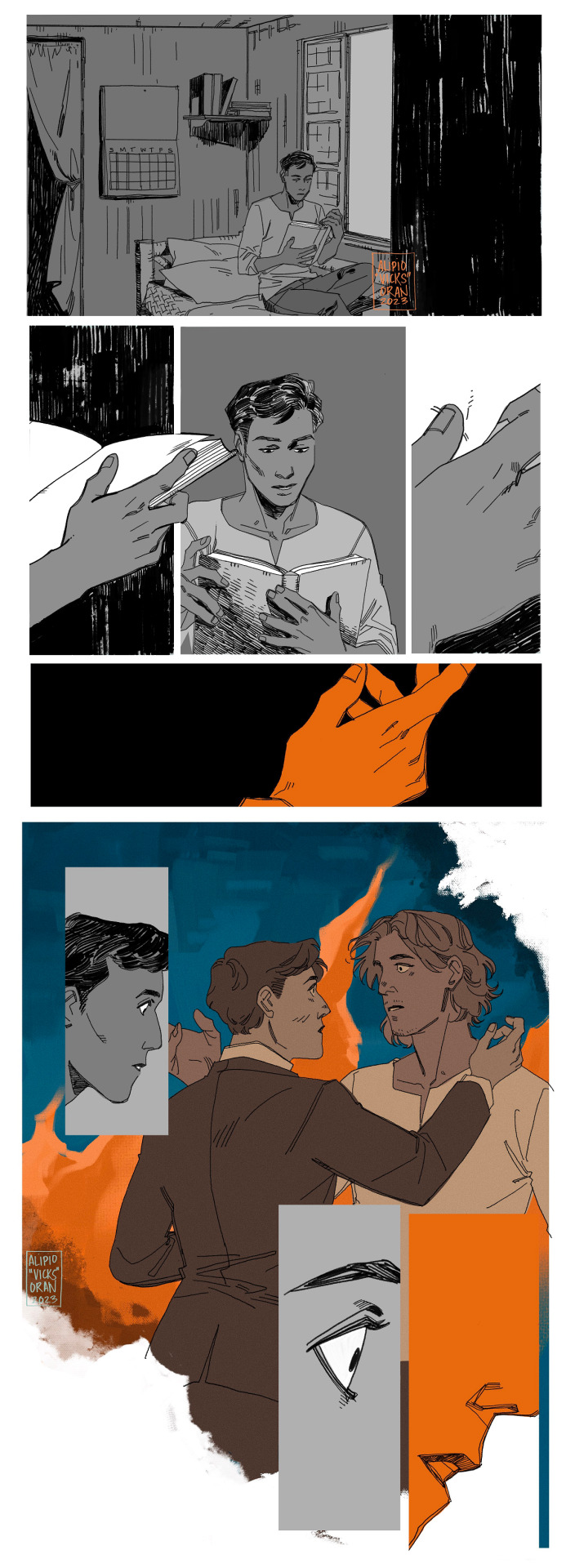
SPARK
this is. about the dialogue between Bonifacio and Rizal, the impact that one had on the other, the way Rizal's novels could spark desire for freedom like a wildfire that will not be tamed. there's an element of 'I would have gone through life half asleep if I never met you,' to it. the linked tragedies, the characters from the novels themselves seem to echo forward onto Bonifacio and Rizal in their own way as well.

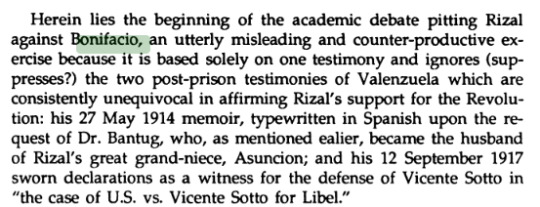
Rizal and the Revolution, Floro Quibuyen



The First Filipino, Leon Ma. Guerrero


Closet Queeries, J. Neil C. Garcia
additionally! the illustrated panel of Ibarra and Elias! it's a combination of a few things; them in Noli, but it's combining the character trajectory Ibarra/Simoun has gone on with El Filibusterismo (hence. the flames. dude said I came here to burn shit to the ground, and damn, it was a speech.) like. do you see the similarities between Bonifacio and Rizal in this because I cannot stop thinking about it.

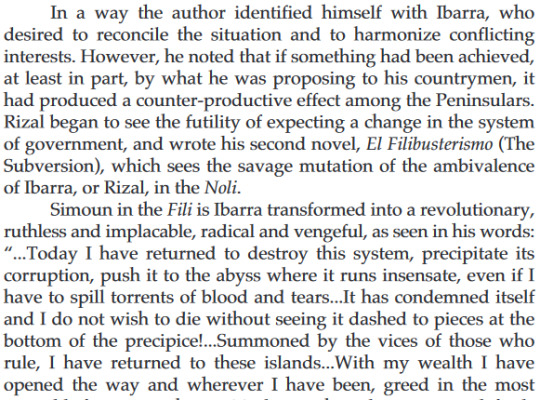
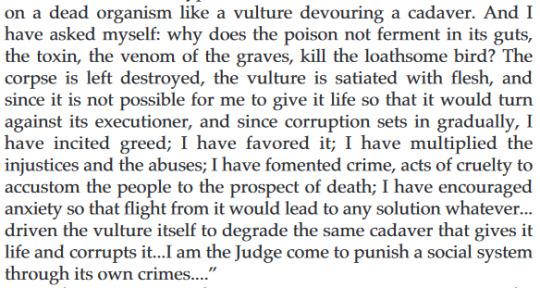
Introduction to Ma. Soledad Lacson-Locsin's translation of Jose Rizal's El Filibusterismo
🍊 twitter 🍊 pixiv 🍊 bsky
#komiks tag#andres bonifacio#jose rizal#art tag#colonial era ph#philippine history#SCREAMING these citations are as long as the comic itself#also a bonus. bit of visual commentary. the red/white of the last panel is supposed to be a call forward to the katipunan flag (red/white)#colors. its that recognition of self through the other baby!! (its an orange-ish red but thats bc the actual red did Not look good against#the other colors i had. RIP)
292 notes
·
View notes
Text




✨️ After months of planning, the Filipino Book and Study Club is now up and running! 🇵🇭📚
Starting in July, we will be discussing 2 books, Barangay by William Henry Scott and History of the Bisayans Volume 1, the English translation of Francisco Alcina's works in 1668 by Kobak.
I will also be hosting my first class in awhile! We will be discussing various deities from the Philippines, the babaylan, and traditional tattooing. It will be held on Friday, July 19. Time will be announced in the coming weeks once we get closer.
Scanned pdfs chapters of Barangay and History of the Bisayans will be available on my Patreon later this week to those in the Mayari Tier on my Patreon. I will also be posting a study guide for you all based on July's chapter readings. These study guides and scanned pdfs of books will be available to both the Apo Laki and Mayari Tiers.
If you have any questions, feel free to ask! And if you know someone who would be interested in joining the Filipino Book & Study Club, share this post to them or tag them.
I look forward to having the first class of this year we you all!
➡️ LINK TO MY PATREON
82 notes
·
View notes
Text
bugna: TAKIPSILIM | destiny's twilight
CHAPTER TWENTY ONE
Pairing: MCU Moon Knight System (Marc/Steven/Jake) x Avatar Fem!Reader
masterlist | previous | next chapter
(A/N: This update took a lot longer than expected, because I really wanted to flesh out Darius Carter's character here. As we discovered in the latest chapter, he is the avatar of Anubis and the past life of our moon boys (Marc, Steven and Jake). I can't wait for you to finally meet him and discover how he first met our beloved Mira (you) and became an avatar. Sooooooo, I will no longer keep you waiting. Enjoy!)

CHAPTER TWENTY ONE - LIEUTENANT DARIUS CARTER
The year was 1914, and the world was on the brink of an inferno. The scent of gunpowder and the sound of marching boots echoed through the continent, war slowly rising on the precipice as the entirety of mankind braced itself for a conflict of an unprecedented scale. As the avatar of Mayari, the goddess of the moon, your immortality has not shielded you from countless conflicts that you have witnessed over centuries. But something about this one felt different.
As the majority of Europe has been set ablaze with the flames of war, you found yourself walking on foreign soil, far from the shores of your own homeland. Leaving the tranquil halls of Harvard University where you had just earned your medical degree being a pensionada, you have answered the call of duty in the first world war as you were dispatched to the epicenter of battle.
Not as a warrior, but as a healer.
It was a time of uncertainty, and your only duty was to save lives and alleviate the suffering caused by the horrors of war. It was a daunting task, but you were determined to do your part.
It was in a military outpost in France where you crossed paths for the first time. The air in the barracks was thick with anticipation and a hint of apprehension as fresh soldier recruits started to fill the encampment, their faces a mix of youthful enthusiasm and the dawning realization of what lay ahead.
You stood among the medical personnel sent by the American Red Cross, observing the nervous yet determined faces of your comrades as you were being introduced to one another and your regiment officer. Your crisp, white medical uniform felt heavy with responsibility, yet you bore it with the quiet strength of someone who had seen far more than her youthful appearance suggested.
It was here that you saw him for the first time.
His towering stature caught your eyes immediately, standing tall and proud among your peers as his striking hazel brown eyes seemed to pierce through the haze of bodies and chatter. He stood out, not just for his imposing presence but for the way he carried himself—confident, yet with an air of humility.
His olive brown skin was littered with nervous sweat as he saluted, his military uniform crisp and new.
"Lieutenant Darius Carter, reporting for duty," he said, his voice steady and confident.
“At ease, Lieutenant”, the regiment officer said, patting the young soldier’s back encouragingly before his eyes fell on you and your colleagues. “You will be in charge of this unit, together with our friends and allies from the American Red Cross. Why don’t you introduce yourselves?”
It was there, amidst the sea of young, eager faces, that your eyes met for the first time. Darius found himself tongue tied as you stepped forward, his heart pounding loudly in his chest as he witnessed you raising your right hand to salute before introducing yourself to your superiors and your fellow army recruits altogether.
“Myrna Katigbak, reporting for duty,” you spoke, managing a polite smile despite yourself as you felt a hundred pairs of eyes on you. And yet, Darius's gaze stood out from the rest of your comrades, his eyes sparkling with bold admiration as he felt a strong connection in that moment, an inexplicable pull towards you that he couldn’t possibly ignore.
Something about your enigmatic presence drew him in. Having grown up in a family with a deep connection to Egyptology, you were like an undiscovered pharaoh’s tomb to the young lieutenant waiting to be unravelled. And like any archaeologist and Egyptologists he has known his whole life, he has made it his first mission to seek you out and fulfill his quiet curiosity.
The next time you saw Darius Carter, it was in the makeshift soup kitchen. The scent of broth and bread filled the air as you ladled portions into bowls, your hands moving with practiced efficiency. Your fellow medics and soldiers, both weary and hungry after their intensive training, lined up at the long table with gratitude etched on their faces as you started to distribute lunch.
The young lieutenant was but a few steps away from the long table as the line progressed, almost chickening out as he neared. As he slowly approached, you looked up and met his gaze fully for the first time. Handing him his bowl of soup and a half loaf of bread, you noticed him trying to linger, his eyes bright with a mixture of hope and shyness as he struggled to find the words to speak.
“You can come back for seconds later, Lieutenant Carter”, you smiled, amused by his poor attempt at small talk which you find endearing.
“Right, thank you, Miss Katigbak”, he stammered as he ended up butchering the last name of your latest alias.
“You can just call me Myrna”, you corrected with an amused smile, bidding him goodbye as your attention shifted to the next man in need of sustenance. “I don’t expect everyone to get my last name right”
Darius internally groaned as he mildly shook his head, managing a soft chuckle despite himself as he continued moving forward and out of the lunch line. He found himself sitting at a nearby table, still gazing longingly at the long table where you were as he started to eat. As the hours slowly progressed and the early afternoon finally made its way, the number of people in the soup kitchen slowly dwindled until the only ones left were him and you.
This time around, Darius no longer allowed his nerves to get the best of him. With careful steps, he approached you once again, his eyes emanating the same spark from when he first laid eyes on you.
“Excuse me, Miss Katigbak”, he asked, finally pronouncing your last name correctly with his rich, baritone voice that resonated pleasantly in the empty vicinity. “May I help you with anything?”
“You got it right this time,” you nodded in his direction as you started preparing your workspace for your upcoming chore. “And yes, you can help by carrying those empty bowls from the lunch tables and I’ll wash them here.”
He eagerly obliged, his movements careful as he balanced multiple trays of empty bowls on his hands. As soon as they piled up, he worked alongside you and shared your dishwashing workload. It was a mundane task for a soldier like him, but it didn’t matter as he had you to keep him company.
Besides, observing you from afar was becoming his favorite pastime. Your smooth and flawless skin was the first thing he noticed, a warm, sun-kissed brown with golden undertones that radiated health and vitality. Your hair, ebony-black and rich, fell in long, soft waves around your shoulders, framing your face perfectly. Your facade possessed a delicate heart-shaped contour that added a touch of youthful charm, along with high cheekbones and small, slightly upturned nose that accentuated your femininity. Your lips, full and naturally mauve, curved into a smile that reflected the warmth of your spirit, a genuine expression that made him feel at ease.
But it was your eyes that truly captivated him. Almond-shaped and chestnut brown, they glistened with warmth and mystery, capable of conveying joy, sorrow, and strength in a single glance. Framed by long, thick lashes, your gaze had an intensity that made those who met it feel uniquely seen. Your naturally arched brows added depth to your expression, giving you a look of quiet confidence.
“You never did go back for seconds, Lieutenant Carter” you spoke out loud, slightly startling Darius from his own reverie.
“I’m sorry, what?” he asked, his voice warm and earnest as you ended up laughing at his amusing response.
“I meant you could go back in line earlier after finishing your meal to get a second serving of soup and bread”, you ended up explaining in which Darius sighed with pure relief. “I was waiting for you”
“Oh, right”, he seemed to relax at your friendly tone. “I’m too shy, unfortunately, so I will most likely die of hunger before I ask you for seconds, Miss Katigbak”
“You can just call me Myrna”, your amusement grew as you observed his quiet awkwardness which you find endearing. “Miss Katigbak is too formal and besides, it’s only the two of us here”
“Myrna it is”, Darius nodded, testing your name in his lips. “And please call me Darius, Lieutenant Carter is also too formal”
“Sure, Darius”, you obliged, prompting a warm smile from the lieutenant. “And now that introductions and our collective nerves are out of the way, care to tell me why you’re really here?”
"Well, to be honest, I was hoping to engage you in a conversation since we’ve first met”, Darius scratched the back of his head, his gaze locked onto yours. “I've heard that you're a medical graduate, and I thought I might pick your brain about a few things."
"I'm happy to help, but I have to warn you that I'm not the most exciting conversationalist”, you laughed softly. “I spend most of my time tending to wounds and doling out soup."
“That’s quite all right”, Darius's eyes sparkled with interest. "In fact, I have a penchant for Egyptology. Did you know that the ancient Egyptians were pioneers in the field of medicine?"
“Egyptology, you say?” you couldn't hide your surprise. "That's an unexpected interest for a soldier. But I must admit, it's a topic I find intriguing as well."
“I could spend all day talking about it if you’re interested”, Darius started, his positive energy overflowing at finding an outlet to share his interests. “I came from a family of archaeologists and Egyptologist, hence my knowledge”
As he started going on about his recent discoveries in the history of Egyptian medicine, you slowly fulfilled his curiosity by answering his questions in correlation to your current expertise, marking your longer interactions with the young lieutenant. He didn’t keep the conversation one-sided and challenged your insights, asking about your journey from America, your studies at Harvard, and your impressions of the war. You answered every question with polite brevity, finding his earnestness both charming and amusing as the two of you find companionship amidst the harsh reality of the ongoing war.
Your paths crossed once again in the crucible of battle. The frontlines were chaotic and brutal, the air filled with the deafening sounds of gunfire and explosions, serving as a constant backdrop to your work as a medic. You and Darius found yourselves deployed and stationed together with him as the commanding officer of your sector. As a medic, you worked tirelessly to fulfill your duty to save as many lives as possible and tended to the wounded from your unit, often under fire.
It was during one of these intense battles that you truly began to see the depth of his character.
Darius was brave, almost to the point of recklessness, always throwing himself into the fray to protect his comrades. It was after one such skirmish that he found himself injured, and you were the one to tend to his wounds. As you worked, he watched you with a mixture of pain and admiration.
"You have a steady hand," he remarked, his voice strained but appreciative.
"Years of practice," you replied, focused on your task. "Hold still, this might hurt."
He winced but remained silent as you cleaned and bandaged his wounds. When you were finished, he looked at you with gratitude. "Thank you, Myrna. I don't know what I'd do without you here."
You smiled softly. "It's my duty, Darius. Just as it's yours to fight."
In the days that followed, your interactions grew more frequent and meaningful. You shared stories, hopes, and fears, finding solace in each other's company amidst the horrors of war. Your connection deepened, and it became clear that Darius's feelings for you were more than just admiration.
One fateful day, your barracks were under siege, almost overrun by enemy forces. The chaos was overwhelming as German soldiers started to storm the base. Recognizing the dire situation, Darius Carter ordered your unit as its commanding officer to evacuate.
“Myrna, take the others and head to the trucks”, he said, handing you a slip of paper with coordinates. “You and the rest of the surviving sector will be taken to the rendezvous point.”
“Understood, Lieutenant”, you nodded, saluting Darius as you started to help your fellow medics and other soldiers escape first, ensuring they reached the safety of the military trucks stationed on the outskirts. As the alarm sounded, signaling the order to retreat, you urged the remaining few of your comrades to make haste, barking orders left and right as you refused to leave anyone behind.
“Darius, you need to go”, you shouted amidst the chaos around you, seeing the lieutenant fought bravely as he clutched his rifle close, firing shot after shot at the advancing German soldiers merely a few feet away.
“I’m not going anywhere without you, Myrna”, he declared, his voice firm with resolve.
“I’ll be right behind you”, you insisted and started to push him away to safety, but he held his ground unwavering.
“No, I’m not leaving you!” he shouted, his eyes locking onto yours with pure determination as his tone left for no argument. “We’re in this together”
You sighed in defeat, allowing him to stay by your side knowing there was no time to debate. The situation grew more perilous by the minute as it became clearer that the enemy was closing in on the barracks. But you and Darius continued to stand your ground, determined to aid your fellow comrades and guide them to safety.
Together, you fought your way through the turmoil as the chaos and destruction intensified, dodging bullets and explosions while glancing left and right to ensure each other’s safety. The moment of truth came when the last of the military trucks departed, and the two of you finally decided to make your escape.
The barracks were in shambles, and you could hear the sounds of enemy soldiers drawing nearer. The two of you made a run for it, racing toward the outskirts where an abandoned motorbike was stationed.
But fate had other plans. Just as you were about to reach the vehicle, a group of German soldiers appeared on the scene, hot on your heels. They spotted your position, and before the two of you could react, shots rang out followed by a sharp crack that rang out. Darius staggered as he cried out in pain, clutching his shoulder where a bullet had struck. You watched in horror as he fell to the ground, the world seeming to slow down around you.
Panic coursed through you as you knelt beside him, trying to assess the situation. The German soldiers closed in, their weapons trained on you both. Your heart pounded wildly in your chest as you let your own instinct take over. There’s no way in hell that you will let him die on your watch.
Without hesitation, you drew upon the ancient powers bestowed on you by your patron goddess Mayari, summoning her very essence that lay dormant within you all these long years until this precise moment. In a blinding flash, your form shifted as the ceremonial armor slowly materialized in a shimmer of moonlight, replacing the former medical uniform enveloping your body.
You, Myrna Katigbak, a simple medic, began to change before Darius’s wide eyes. The initial shock and disbelief he felt witnessing your transformation slowly turned into awe, marking the beginning of your intertwined fates being woven together.
END OF CHAPTER TWENTY ONE.

masterlist | previous | next chapter
#marc spector x reader#steven grant x reader#jake lockley x reader#moon knight x reader#marc spector#steven grant#jake lockley#moon knight#moon knight fanfic#mcu moon knight#moon knight fanfiction#moon knight system#moon boys#moon knight comics#layla el faouly#moon boys x reader#marc x avatar f!reader#steven x avatar f!reader#jake x avatar f!reader#moon knight x avatar f!reader#moon knight x you#moon knight x y/n#pre colonial philippines#philippines#philippine mythology#ancient egypt#egyptian mythology#khonshu#mayari#anubis
50 notes
·
View notes
Note
Hi, I want to ask if you have any topics about the Philippine-American War? I have gotten myself in Philippine History and I want to know deeper. Thanks:)
I was thinking of many ways on how to answer this because this is such a large and complicated topic but I could just try to summarize some stuff here and tell you what I know and what I could find.
The Filipino-American war mainly started as Filipinos felt betrayed by their former American allies after the country was sold to them by Spain after the Spanish-American war during the Treaty of Paris of 1898 for $20 million alongside other Spanish colonies like Puerto Rico, Guam, and Cuba (American Historical Association, n.d.). This feeling of betrayal had come from the fact that the leader and dictator president of the Filipino revolutionaries, Emilio Aguinaldo of the Kataastaasang Kagalang-galang Katipunan ng mga Anak ng Bayan (en. The Supreme and Honorable Association of the Children of the Nation) or the Katipunan for short, actually sought assistance from the Americans in Hong Kong during the Filipino Revolutionary War against Spain which was happening at the same time (Kedmey, 2013). This is why tensions were so high with the Americans when they first formally colonized the Philippines.
Interestingly, the purchase also included some territories that weren't actually part of Spanish rule such as the Sultanate of Sulu as well as some indigenous territories which led to a strained relationship with the Americans moving forward such as the independent Moros of Muslim Mindanao later being forced to assimilate to the rest of the colony of the Philippines despite previous agreements that state that they will leave them alone, mirroring the way the United States government treated Native Americans (Gowing, 1968).
Fighting between the American army and the Filipino army first broke out when on February 4, 1899 after Private William W. Grayson fired at 4 Filipino soldiers who cocked their rifles in response to them ordering the men to halt which later broke out into the Battle of Manile of 1899 (Chaput, 2012). As the Filipinos and Americans declared war on each other, the Katipuneros resorted to the mountains to start guerilla warfare against the American army (Philippine-American War, n.d.) which then lasted until 1901 when Aguinaldo was captured on March 23, 1901, just a day after Aguinaldo's birthday actually with the capture being attributed to two of his men, Lazaro Segovia and Hilario Tal Placido who betrayed him to the Americans with his other men still being too relaxed from the festivities the day before (Ocampo, 2010).
The fighting continued despite his capture and surrender until the last of the generals, General Macario Sakay, surrendered in July 14, 1906 who was then later executed along side his men on September 13, 1907 despite the initial promise of amnesty by the American government (Pangilinan & Pimintel, 2008).
The war ended the lives of 4,300 American soldiers with only 1,500 having been killed in action with the rest succumbing to diseases, while Filipino forces suffered 20,000 casualties alongside the death of 200,000 Filipino civilians due to hunger, disease, and combat (Philippine-American War, n.d.).
The violence of the situation and especially committed by the American soldiers prompted a lot of protests in the United States to stop the war immediately, as letters of the situation had been sent back to their homes which describes in excruciating detail the war crimes that these soldiers were ordered to commit such as blockading and burning down villages, extreme torture of captured and suspected enemies, and much more. The most well-known of these torture methods that I remember being taught to us in history classes as early as 4th grade was the "Water Cure" where American soldiers would force water down the victim's throat in and force them to vomit it back out. This article has a detailed account of the exact nature of this torture method as it discusses the torture of Mayor Joveniano Ealdama of Igbaras, who, although no American troop was actually hurt in his town, was tortured with his town being burnt down by the Americans the very next day (Vestal, 2017).
I do have to be honest, I was utterly shocked at how little Americans really knew about the Philippine American colonial era and by extension the Philippine-American war especially with the sheer amount of brutality the Americans had done to Filipino locals as well as the large impact the American government and American culture has had in my country and I am glad that more and more people are starting to learn more about this but it's still rather disappointing.
Videos on the Philippine-American War
If you want to learn more about the Philippine-American War, I have a couple of recommendations for videos that you can watch.
This video by Crash Course explains the origins of American Imperial idealization as well as the wars that led up to the colonization of the many territories that America acquired during this time era:
youtube
Here's a good summary by history teacher Mr. Beat of the major aspects of the war as well as the American public's perception of it that you can watch:
youtube
Here's a video made with a Filipino-perspective by Jonas Tayaban on the topic:
youtube
Here's a summary in Tagalog. It doesn't have English subtitles though but it does detail more things about the build-up and the subsequent wars between Spain and America and later the Philippines and Spain and then America too:
youtube
Movies about the Philippine-American War
I would also be remiss to not suggest some historical movies that tackle the events of this time period and especially TBA Studios' Artikulo Uno films Heneral Luna (2015) which focuses on the most popular and effective general of the revolution Gen. Antonio Luna, and Goyo: Ang Batang Heneral (2018) which focuses on Gregorio "Goyo" del Pilar, one the youngest generals of Filipino history who died a very tragic death at a young age:
youtube
You can watch the full movie here complete with English Subtitles
youtube
Another well-known movie about this time period is Viva Films' El Presidente (2012), although I had heard people say it's very much biased to the controversial dictator president Aguinaldo's side with many people citing that as the reason why they don't like the film.
youtube
Here's a reupload of the full-movie. It doesn't have subtitles though.
I don't know of any American-made movies that focuses on this topic and I know there's several other films that focus more on the politics of the Katipunan and the Filipino Revolutionary War against Spain, but not necessarily the Philippine-American War so if anyone has other suggestions, please let me know.
I would also like to suggest documentaries but most of the ones I've seen are on World War II and the others are other YouTube videos by history channels that I'm not too familiar with made by mostly white American YouTubers. Not that that would disqualify their videos (I did reference both John Green and Mr. Beat here) but I don't know these history channels and their hosts enough to recommend them in good faith as of right now.
Books and Further Reading on the Philippine-American War
For books on the subject, I often reference the many writings of Ambeth Ocampo such as his Looking Back series, specifically:
Looking Back 2: Dirty Dancing (Shopee, Lazada, Amazon)
Looking Back 11: Independence x6 (Shopee, Lazada)
Looking Back 13: Guns of the Katipunan (Shopee, Lazada)
I'm also currently interested in buying some other books about the topic like The Hills of Sampaloc: The Opening Actions of the Philippine-American War, February 4-5, 1899 (Shopee, Amazon) but I don't really have any extra money to spare for it right now.
I remember that my father had some other books about this too but the names had escaped me and it's far too much work to try to sort out through his entire book pile in our house.
I hope this answer's comprehensive enough since the subject is, as I said before, quite complex and rather large so I can't really get into all the specifics right now.
References:
American Historical Association. (n.d.). How Did America Enter the Picture?. Retrieved on 3 February 2024, from https://www.historians.org/about-aha-and-membership/aha-history-and-archives/gi-roundtable-series/pamphlets/em-24-what-lies-ahead-for-the-philippines-(1945)/how-did-america-enter-the-picture
Chaput, D. (2012). Private William W Grayson's War in the Philippines, 1899. Retrieved on 3 February 2024, from https://ne-test-site8.cdc.nicusa.com/sites/ne-test-site8.cdc.nicusa.com/files/doc/publications/NH1980GraysonWar1899.pdf
Gowing, P. (1968). Muslim-American Relations in the Philippines, 1899-1929. Retrieved on 3 February 2024, from https://asj.upd.edu.ph/mediabox/archive/ASJ-06-03-1968/gowing-muslim-american%20relations%20in%20the%20philippines%201899-1920.pdf
Kedmey, D. (2013, June 13). Exiled in Hong Kong: Famous Company for Edward Snowden.Time. Retrieved on 3 February 2024, from https://world.time.com/2013/06/15/exiled-in-hong-kong-famous-company-for-edward-snowden/slide/general-emilio-aguinaldo/
Ocampo, A. (2010). Looking Back 2: Dirty Dancing. Anvil Publishing
Pangilinan, F., & Pimintel, A. (2008, September 9). A Resolution Expressing the Sense of the Senate Honoring the Sacrifice of Macario Sakay and all other Filipinos who Gave Up their Lives in the Philippine-American War for our Freedom, Senate Resolution No. 623, 14th Congress of the Republic of the Philippines. Retrieved on 3 February 2024, from http://legacy.senate.gov.ph/lisdata/83927584!.pdf
Philippine-American War. In Britannica. Retrieved on 3 February 2024, from https://www.britannica.com/event/Philippine-American-War
Vestal, A. (2017). The First Wartime Water Torture by Americans. Retrieved on 3 February 2024, from https://digitalcommons.mainelaw.maine.edu/mlr/vol69/iss1/2/
#filipinfodump#filipino history#american history#history#filipino-american history#philippine-american war#military history#colonial history#imperialism#american imperialism#american colonization#american colonial era#philippines#america#filipino#katipunan#us military#president emilio aguinaldo#general antonio luna#general gregorio del pilar#filipino heroes#filipino presidents#john green#crash course history#crash course american history#mr. beat#jonas tayaban#moobly tv#filipino movies#heneral luna (2015)
102 notes
·
View notes
Text

#visayan#Filipino#lapu lapu#magellan#history#historical memes#colonizers#anti colonization#anti colonialism#pre colonial philippines#precolonial#precolonial Philippines#bisaya#bisayan
329 notes
·
View notes
Text

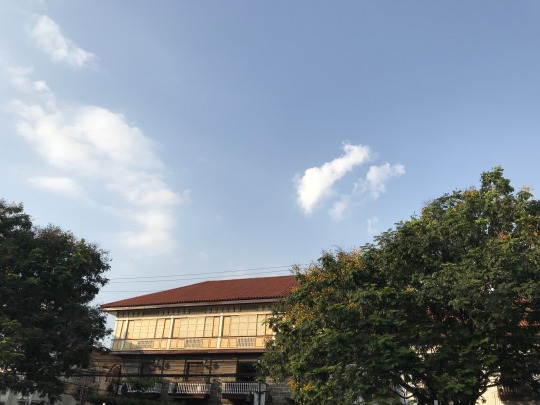

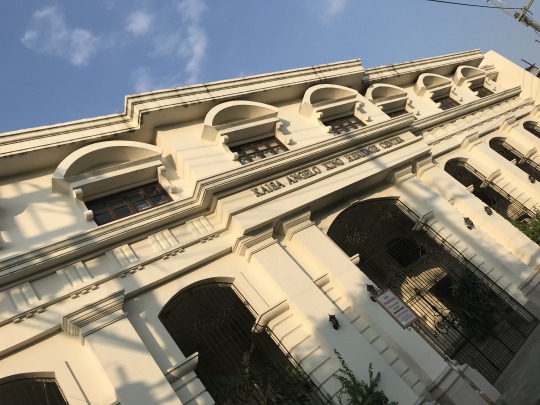

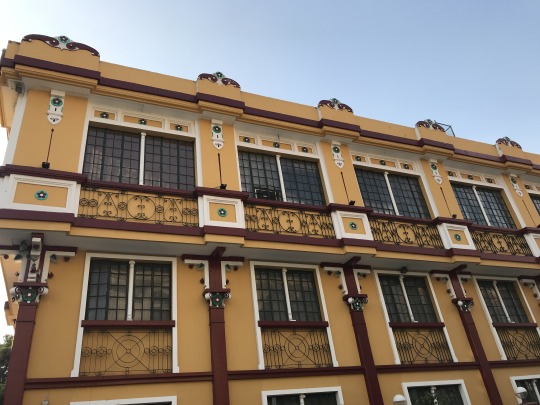



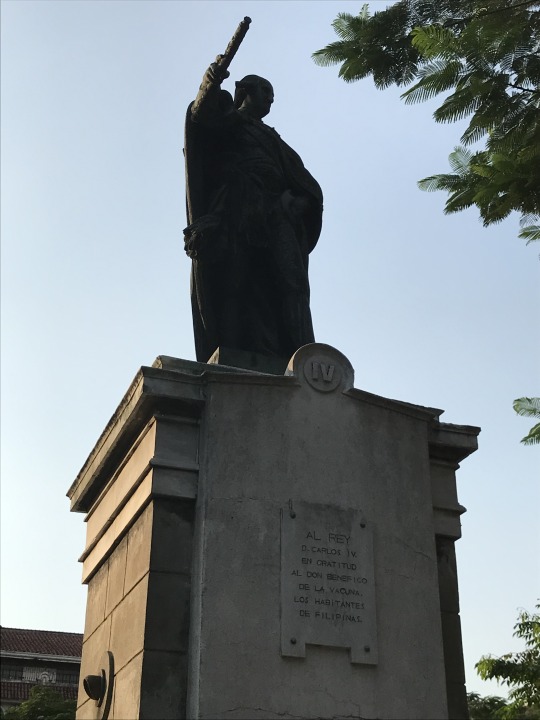
City Shots 5 (2022)
My opportunities to visit heritage sites have been few and far in between, what with recent upheavals and major life milestones coming about. Unlike in the 2010s, where I could make these trips on a whim, things were different in the 2020s. Up until I earned enough to go on trips on my own, I largely traveled with my family, especially during the pandemic. The images taken here were taken during Holy Week, when my father agreed to do our annual Visita Iglesia in the Old City of Intramuros.
The shots were taken using two phones (an older phone was used in some shots as a precautionary measure against thieves). Due to the afternoon heat, my family could only go down one road rather than pray through all the stations scattered in the district. Despite this setback, I had enough time in between prayer to take a modest selection of images of the reconstructed and themed structures of the city.
This is the first of two parts. View the second post here.
Important historic notes (including one about the street art) below the cut!
Camera: iPhone 6 and iPhone 7
Location: Plaza Roma, Luna Street, various side streets, and the Plaza San Luis Complex, Intramuros, Manila, Philippines
Date: 14 April 2022
Usage rights: By request. Noncommercial only.
Only one building complex, the San Agustin Church and convent, truly survived the bombings of World War II. Older historic buildings (including the Manila Cathedral and the Ayuntamiento de Manila) had to be rebuilt. One building, the Casa Manila Museum, was a reconstructed structure from a different district altogether.
Some of the newer buildings were also made to superficially resemble 18th and 19th Century colonial buildings. The district's current administration mandated that all new structures in the city must be in that style to preserve its atmosphere. The result is not quite an authentic historic district but what feels sometimes like a theme park version of one.
Featured in the parking lot street art is Manila's heraldic animal, the "sea lion," a chimerical mix of the front parts of a lion and the tail of a fish (not to be confused with the animal of the same name). The coat of arms of Manila, which included this creature, was first bestowed upon the city by King Philip II on the 20th of March 1596. This is not to be confused with the Singaporean merlion, which is a chimerical beast with the head of a lion and the body of a fish, first used in 1964.
#photography#city shots#urban#urban photography#architecture#buildings#trees#church#colonial philippines#Manila#Intramuros
9 notes
·
View notes
Text
Asian slaves, indigenous Americans, and identity in colonial era Mexico
The Spanish Philippines had a diverse slave population for local labor and export, including Filipino Indians [i.e. natives; indios], Muslim war captives (moros), and foreign slaves from as far away as Portuguese India.
… Upon their arrival, chino slaves [i.e. any Asian slave, not just Chinese] were absorbed by the urban economy of Mexico City, where they mainly worked as domestic servants or in textile mills (obrajes) … For their part, working in the city provided chinos with some possibilities for manumission. Chinos in domestic service were especially apt to embrace the limited opportunities available to them and to experience some social mobility. In the obrajes, chinos had few of the freedoms given to domestic servants, but they did benefit from government oversight of the industry. During official visits, chino slaves appealed for protection from overt exploitation by claiming that they were Indians (even if they were from Portuguese India). Remarkably, visiting inspectors listened to their complaints, and they often responded by liberating individual chinos under the assumption that they were indeed native vassals and could thus not be held in bondage. The overall experience of chinos in the viceroyal capital confirms the benefits of living close to the center of colonial power.
The presence of free indigenous immigrants from the Spanish Philippines in Mexico reinforced the idea that all chinos were Indians. The complex governing structure of colonial Mexico involved two republics or political communities (the república de indios and the república de españoles); this organization separated the indigenous majority from everyone else to facilitate the collection of tribute and the ministry of the Catholic Church … [N]ative immigrants from the Philippines purposely sought to confirm their membership in the Republic because corporate status provided personal advantages. They asked to be tallied in tribute rolls in Mexico to benefit from concomitant privileges, such as trading rights and legal representation through the General Indian Court. At the same time, free Filipinos were frequently confused with chino slaves - a situation that had serious consequences for Filipinos' relations with colonial institutions and enslaved individuals. Some immigrants resented having their indigenous identity questioned and sought to maintain a sense of their Indian-ness by keeping their distance from chino slaves. The majority, however, expressed solidarity with chino slaves. Filipino artisans, for example, took on chino slaves as apprentices and taught them marketable skills. Similarly, Filipino traders incorporated chinos into their own credit networks to facilitate self-purchase.
Individual chinos who were manumitted also embraced an Indian identity, regardless of whether they were from Goa, Macau, or other places in South and Southeast Asia. In this way, chinos challenged official attempts to define them solely as former slaves. Instead, they sought to join the free republic. The possibility for this kind of social integration caused widespread concern among slave owners. To defend their property rights, masters started to brand chino slaves on the face, rather than on the chest or arm as they did with Africans, in order to dissuade them from fleeing and "passing" as free Indians. This horrifying development shows that Indian communities welcomed runaway chino slaves and, by extension, that slave owners sought visible markers of their slaves' status.
Excerpt from the Introduction to “Asian Slaves in Colonial Mexico: From Chinos to Indians” (2014) by Tatiana Seijas
120 notes
·
View notes
Text
writing this one-shot fic of mavuika and capitano is rlly grinding my gears bc ofc i'm researching a Lot about traditional "Natlan" attire, which means really diving deep into the cultures that Natlan was inspired by.
so what the fuck genshin. "Mavuika" is from Mahuika, the Maori god of fire, and then you adorn her with Aztec-themed clothes, and her home is inspired by the native American and Philippine pueblos. you really lumped all of our cultures together like it's one thing, and it would have been tolerable, but then you fucking make her as white as paper.
sigh.
#on a less serious note#i really do not know what i'm going to write mavuika's pajamas are now#do i go aztec and make her wear huipil and cueitl?#or do i go pre-colonial Philippines and give her a badu and tapis#or maybe lean into her name and give her maori clothing?#FUCK IDK WHAT TO DO#also i am Filipino so do Not come for me#mavuika#capitano#genshin#mavuika x capitano#capitano x mavuika#genshin impact#fuck u genshin
39 notes
·
View notes
Text


Oscar Wilde 🤝 Álvaro Retana (being absolutely iconic)
Oscar Wilde (1854 - 1900), Irish writer, went to trial on 1895 for being homosexual and when asked about if he kissed a guy he said “Oh dear no. He was a particularly plain boy —unfortunately ugly— I pitied him for it”.
Álvaro Retana (1890 - 1970), spanish writer, went to trial on 1939 (last year of the spanish civil war) for supposedly keeping safe some republican (one side of the war) objects and adorning religious objects with republican images. Stories say that since he was openly homosexual he was accused of drinking semen from consecrated chalices to which he simply said “Sir, I always rather drink it from the source”.
(Álvaro Retana even called himself Oscar Wilde’s heir)
#technically Álvaro was born on Philippines#but the Philippines were a spanish colony when he was born#and I think he lived all his life in spain cause his parents are spanish too#he called himself the most handsome novelist in the world#oscar wilde#álvaro retana#alvaro retana#lgbt history#lgbt#gay#dorian gray
12 notes
·
View notes